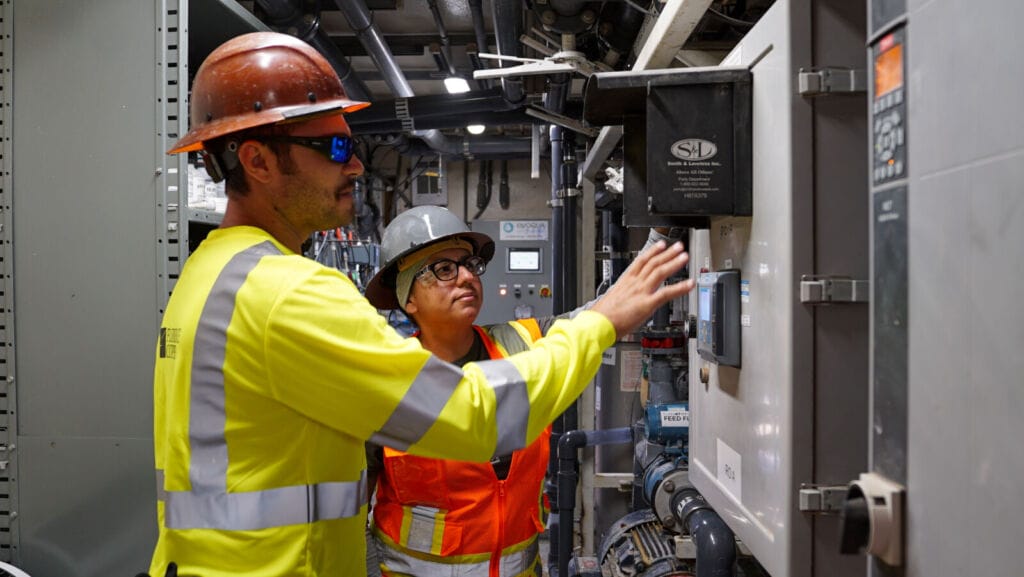When you run out of batteries, you simply drive, bike or run to the store for a replacement. Even when your laptop eventually bites the dust, you can replace it online in a matter of days. Most simple pleasures can be easily replaced (albeit costly, depending). But, what happens if/when we run out of critical minerals? Or, at a minimum — demand exceeds supply? In addition to not having the benefit of an online option to purchase mass quantities of minerals, there are multiple other obstacles that prevent a steady flow of critical minerals from fulfilling needed supply.
READ ALSO: Build Your Future Arizona addresses worker shortage
If you’re wondering exactly how likely it is for critical mineral demand to exceed supply — we’re well on our way. According to the International Energy Agency (IEA), it’s possible for demand for copper to outpace supply by the second half of this decade from mines that are currently operating or under construction. A study released by S&P Global in 2022 mirrors this, predicting shortfalls beginning in 2025, extending into most of the next decade. The IEA has also estimated lithium and cobalt supply shortfalls will occur by 2028.
Why it’s a problem
One major reason why a gap in mined critical minerals is a problem — as Sophie Dessart, manager of communications and public affairs at Florence Copper, so accurately explains — “Mining ensures our everyday lives are possible.”
Using copper as an example, everyday items from wiring, plumbing, cars, trains, airplanes, cookware — and our opening examples of batteries and laptops — rely on copper.
“Modern society is designed to make technologies that utilize mined minerals readily accessible to the public,” Dessart says.
But it’s not only every day, modern societal staples that are pushing the demand for critical minerals to the limit. Green energy initiatives, for example, require a tremendous amount of critical minerals.
“As the Biden Administration sprints towards its goal of a carbon-free energy supply in the U.S., it has recognized that production of critical minerals must be increased by 400-600%,” says David Wallis, shareholder at Gallagher & Kennedy. “For example, it takes four times the amount of copper to produce an electric vehicle compared to a fuel-combustion engine vehicle.”
According to the IEA, demand from the low-carbon energy generation sector will triple.
In addition to critical minerals, national security also relies heavily on critical minerals.
The U.S. Geological Survey (USGS) has designated 50 critical minerals essential to the economic and national security of the U.S. Yet currently, a critical mineral gap expands between China and the U.S. — China accounts for 60% of global production and 85% to 90% of processing and more than 75% of manufacturing of critical minerals.
At the close of 2023, the Committee on Oversight and Accountability reported that Isabel Munilla, deputy assistant secretary for multilateral engagement, climate and market development at the Office of International Affairs at the U.S. Department of Energy (DOE), said, “For the 31 of 50 minerals designated by USGS in its critical minerals list, the U.S. relies on other countries for more than 50% of our requirements and relies entirely on foreign sources for more than a dozen of these minerals.”
Munilla added that the significant demand is enough that “no single country will be able to satisfy global demand,” but despite the challenge, “provides an opportunity to expand U.S. domestic industries to meet market demand.”
Major roadblocks
If mining — particularly domestically — is so vital to supporting the demand of critical minerals needed to support zero-carbon efforts and national security, what is impeding the ability to produce them?
“You have a lot of demands coming for minerals based on where consumption is and where consumption is going that we just didn’t have in the pipeline before,” explains Adam Hawkins, president of Global External Relations, “because we didn’t realize we were going to need as much of it as we do today.”
Added to the challenge Hawkins’ describes is an abundance of regulatory and timing roadblocks.
“The problem with meeting the increasing demand for minerals is that it can take a decade to permit a new mining operation in the U.S.,” Wallis says. “If there is opposition to the new operation, it can take much longer. In Arizona, we have experienced these delays with proposed new mining projects being challenged by national public interest groups in federal courts.”

Strategies and solutions
While significant challenges stand in the way of critical mineral domestic mining, there are solutions. But, they are remedies that will require prioritized and expedited action.
“For new domestic mining to advance, it will require regulatory and permitting reforms, mining innovations and responsible production of minerals,” Wallis says. “Setting lofty goals is not enough, federal and state government officials need to make policy decisions that allow for these changes.”
Hawkins adds that because it’s most cumbersome to raise capital in the earliest stage of the mining life cycle, having government support could positively impact new-mine timelines. “I’d really like to see the administration take an aggressive position on funding early-stage exploration,” he says, “ just so people can go out there and test these theories when it is risky, when they don’t know whether or not they have something.”
Another potential solution to bridging the critical mineral gap is revisiting abandoned mine sites.
“Our country has somewhere between 400,000 or 500,000 known abandoned mine sites spread out across the country,” Hawkins says. But the problem with many, he elaborates, is they are safety and environmental hazards and “100% purely a public policy problem.”
“We have had various iterations of legislation floating around Congress over the last decade plus,” Hawkins notes, “it’s referred to as Good Samaritan legislation that’s meant to address the abandoned mine land sites. If any responsible operator takes custody of that site either through lease or purchase, they’re on the hook for all of the associated legacy liability and litigation exposure to that site. And so no sentient human being is going to authorize that transaction.”
Hawkins goes on to explain that legislation would create a tool where the legacy liability would remain with the U.S. government and the obligations to clean up the site and to move it towards closure under financial assurance laws.
“Being able to carve out the legacy liability portion for those sites would be a tremendous game changer,” Hawkins says. “It wouldn’t clean up all of them but it would definitely put a lot of them into play. These are sites that have minerals that we need, things that are on the critical minerals list, things that aren’t, but either way go towards modern daylight.”
In Arizona, there are glimmers of progress in bridging the mining gap.
“To provide a bright spot in an otherwise gloomy picture, Florence Copper is at a very exciting point in our project operations because we recently received our final major federal permit to initiate construction on our commercial facilities,” Dessart says. “We now have one of very few construction-ready, permitted copper projects in North America and expect to achieve first commercial copper production in 2025, meaning we are able to domestically produce a critical mineral at a crucial juncture in the green energy transition.”




